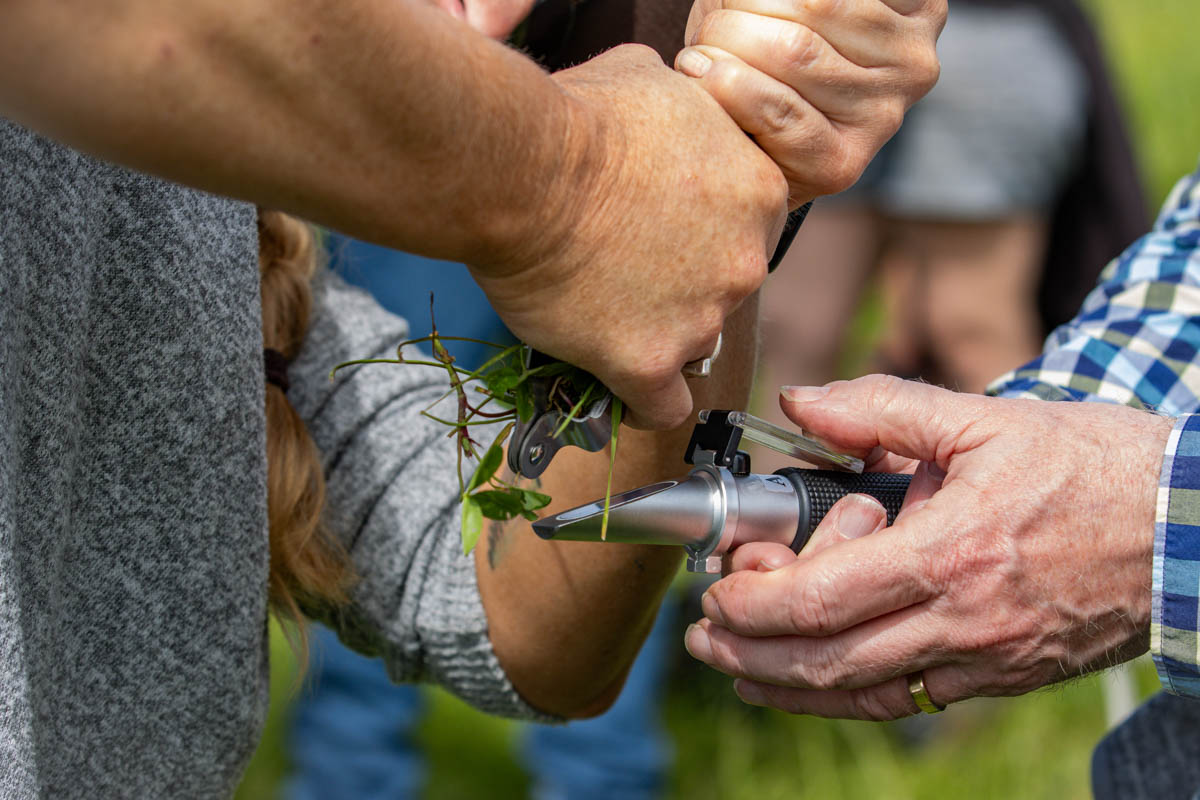New DairyNZ research shows farmers can identify ways to increase efficiency and reduce environmental footprint – but there will be challenges for some.
The Greenhouse Gas Partnership Farms research project worked with farmers to identify and model how their farms might reduce both nitrogen loss and greenhouse gas emissions.
“Making these gains will be the first steps as farmers work towards the Government’s 2030 climate change targets,” said DairyNZ strategy and investment leader Dr Bruce Thorrold.
For some farms, the research identified options that offered lower footprint and higher profit. For already highly efficient farms, footprint gains tended to come at a cost to profitability.
“It is more challenging for farms that are already efficient. For them, it’s about where even the smallest gains can be made. Small improvements on individual farms add up at national level.”
The dairy sector is working through a process of helping farmers know their emissions profile numbers, identify options and implement solutions.
“The Partnership Farms research highlights that to reduce footprint, all farms had to reduce total feed eaten and nitrogen surplus. The findings highlight the need for ongoing research into technology to reduce footprint without reducing feed,” said Dr Thorrold.
“These technologies are required for dairy farmers to achieve the challenging Climate Change Commission recommendations. Investment in R&D and support from the government will be crucial.”
The Partnership Farms research is part of DairyNZ’s Dairy Action for Climate Change commitment to support dairy farmers and the wider sector to address on-farm methane and nitrogen emissions long-term.
The Partnership Farms modelling was carried out for six farms in Waikato, Southland and Canterbury.
The work found a strong understanding of the farm, the people and the farm system was important at the beginning. The process involved a Whole Farm Assessment and modelling in Overseer and Farmax.
Dr Thorrold said dairy farmers are committed to playing their part in addressing climate change, alongside the rest of New Zealand, and there is a wide range of work underway on farms throughout the country to achieve this.
“It’s about doing the right thing as a sector and consumers are also increasingly demanding sustainable products.”
The next step is for DairyNZ to work more widely with farmers to start exploring their own system adaptations through its Step Change project. Step Change is helping farmers understand the options best suited to their farm and how to improve profitability and water quality and reduce greenhouse gas emissions. A series of Step Change events will start on March 10 to help farmers explore their options.
“Our regional teams are working with farmers to help them understand their starting position and then uncover the opportunities available – some of which are demonstrated through this research,” said Dr Thorrold.
Farmers interested in learning more about improving their environmental performance and profitability can find out more at dairynz.co.nz/stepchange
Case studies: See the Greenhouse Gas Partnership Farms’ case studies on the DairyNZ website at dairynz.co.nz/GHGfarms. These detail options for farms to reduce both nitrogen loss and greenhouse gas emissions, while maintaining or increasing profitability in some cases.
A snapshot of one partnership farm case study – Tokoroa Pastoral
Five options were modelled for the Moss family farm, Tokoroa Pastoral, in Waikato, owned by climate change ambassador George Moss and his wife Sharon. The 70-hectare farm milks 175 cows.
The research found farms such as Tokoroa Pastoral, which are highly efficient, generally can only slightly reduce environmental losses without affecting profitability.
The modelling showed reducing replacement rate achieved a small reduction in greenhouse gases and a small gain in profit, and looked to be the best opportunity. This option relies heavily on reducing the not-in-calf rate and finding an alternative use for additional grass grown on the support block.
The modelling on Tokoroa Pastoral also showed reducing imported supplement is the option most likely to reduce GHG, but this tended to reduce profitability. When combined with a reduction in nitrogen fertiliser use, it made the largest reductions in GHG emissions, with a small drop in profitability.
George said he had taken steps to reduce emissions, including fast-forwarding his genetics with sexed semen, using urease inhibitors and reducing his nitrogen surplus.
“After farming in Tokoroa for around 30 years, I am now planning ahead for changes expected in the next 30 years,” he said. “As a society, we know greenhouse gases need to reduce from basically all sources – and it will take each and every one of us.”





